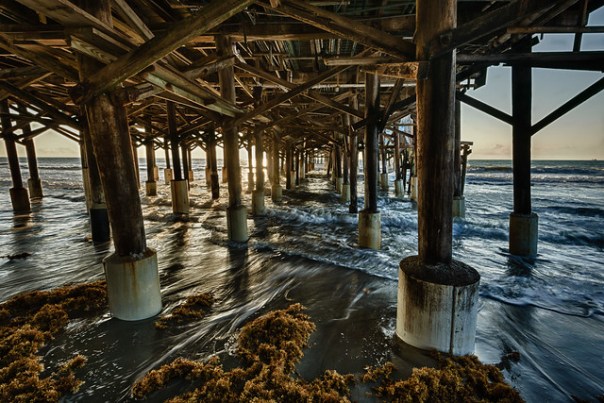Kevin K., Kevin M, and I went to Viera Wetlands last weekend. We’d had heavy rain the week before and the roads were closed to cars, so we walked.

Handsome Blue – Little Blue Heron
You’ll see different things walking versus driving. When you drive, you can cover a larger area and maybe see many more things. But sometimes the faster pace and the isolation inside the vehicle will make you miss something that you might see if you walk. And when you walk, it’s easier to stop and really look at something. Or stop and wait for something to happen. When we first saw the Little Blue Heron, it was in the shade. But we stayed for a few moments and the sun rose enough to put it into some better light. Worth waiting for, and we probably wouldn’t have if we were driving.
We started too late for a sunrise photo, but I did manage to make this infrared image of the moon setting into the marsh.

Marsh Moon – The moon sinks into the clouds over Viera Wetlands. IR, B&W, 3 frame Vertical Panorama
We also stopped for a bit to watch a family of Sandhill Cranes. With all the birders that frequent Viera Wetlands, they’re very used to people and you can get pretty close without disturbing them. They’re interesting birds. Whenever I see two adults foraging, they seem to take turns keeping an eye on things. One will be head down, while the other is up and looking around. When there’s a young one with its parent, it always seems to mimic what the parent is doing.

This one! This one is a good bug to eat! – Sandhill Crane and Colt at Viera Wetlands
Even though the birding action in our area might be slowing down as summer approaches, we still enjoyed ourselves. We spent some quality time out in nature, and made a few photos we like. Another good day for a photo-op in Central Florida.
Thanks for stopping by and reading my blog. Now, go make some photos!
©2014, Ed Rosack. All rights reserved.
























